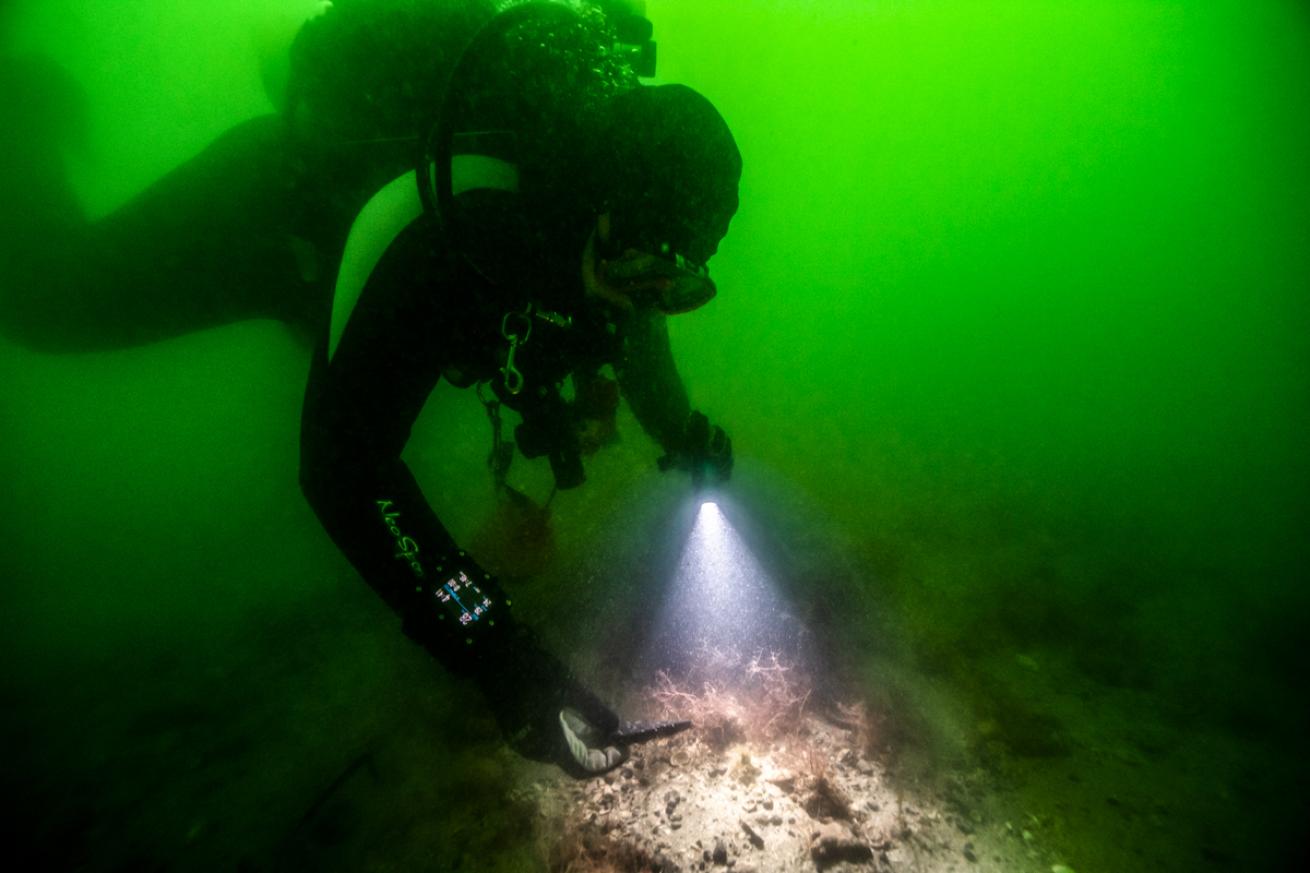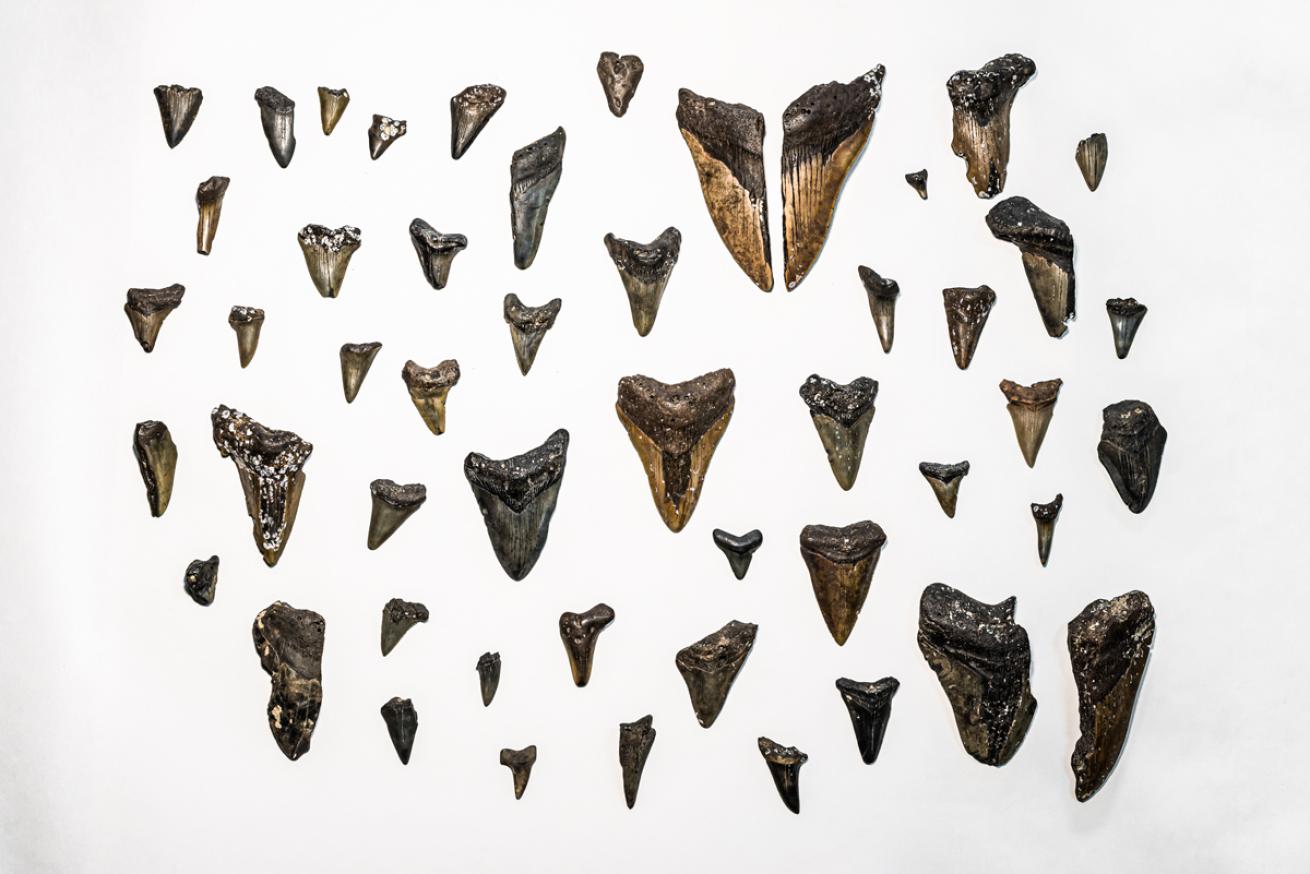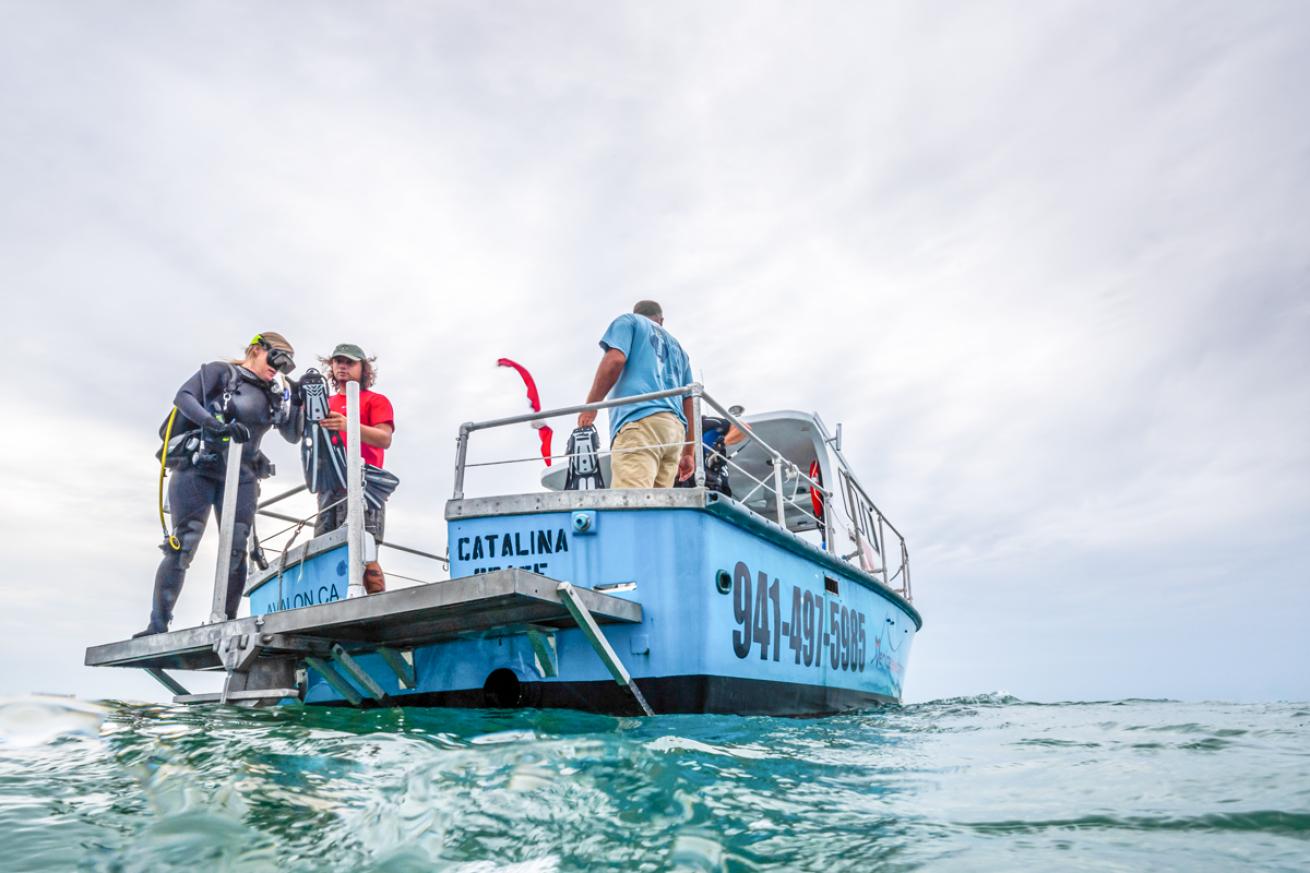Where to Scuba Dive for Fossil Hunting
Following the thrill of the hunt for megalodon fossils is akin to treasure hunting—but with a high likelihood of successful finds. Sometimes called “tooth fever,” the search for valuable teeth is highly addictive and accessible to recreational divers. A tour of the world’s best opportunities can be made from Florida to North Carolina.
Megalodon, an extinct species of shark that might have grown to lengths greater than 50 feet, lived in warm oceans during the Miocene and Pliocene epochs from around 20 million to 3.5 million years ago. When they became extinct in the Pliocene, many of their teeth were fossilized due to changing ocean depths and sedimentation processes. But megalodon isn’t the only type of fossil that can be found on dives. Other interesting finds include stingray barbs, dugong bones, whale bones, horse teeth and even mammoth bones.
Venice, Florida, is one of the best-known recreational destinations for finding megalodon teeth because the fossils are easily accessible to any level of diver in shallow depths that enable long dives. New divers might even find teeth on their first dives. You can find a variety of fossils on nearby Florida beaches, but not on Venice Beach, where sand was imported to combat erosion, burying any exposed teeth. Dive with a charter to keep safe from boat traffic and to save yourself time finding the most recently exposed areas.
Heading northeast from Venice to the Atlantic, the next major fossil-hunting area is the St. Marys River in Georgia, and then on to the more popular Cooper River in South Carolina. Diving the Cooper River is challenging because of a zero-visibility environment at the mouth of the river during slack tide. Tidal shifts limit available time because the river’s flow during high and low tide is too vigorous to dive.

Jennifer IdolA diver examines a fossilized bone in the shallow depths of Venice, Florida.
Finish your tour in North Carolina for the largest teeth and the best visibility. Meg Ledge, off the coast of Wilmington, is the premier site for fossil hunting. It is named for numerous limestone outcroppings that became collection points for teeth. While opportunities here are rich, dives are deep, pushing recreational limits.
Need To Know
Conditions: Viz varies from 5 to 30 feet at most sites (up to 100 feet in North Carolina); water temps around 70 degrees in winter and 85 during summer.
What to Wear: 5 mm wetsuit.
Dive Shops Recommended by PADI: Aquatic Safaris, Wilmington, NC Charleston; Scuba, SC.

Jennifer IdolMegladon Teeth
Dive Sites
Venice
Fossil beds here are very shallow and accessible, which sometimes makes finding new teeth difficult because the area has already been picked clean by divers. You might not come up with many fossils of any kind, but a few people on each boat always seem to find some teeth. Keep in mind that a permit is required to take fossils— but not teeth—in Florida.
Cooper River
Book a charter to perfectly time diving in this hard-bottom river. Teeth are exposed at the mouth of the river, where salt and fresh water collide. Although shallow, much of this diving must be done by feeling the bottom at slack tide. You must first obtain a permit to remove teeth and fossils in South Carolina.
Meg Ledge
This remote North Carolina site requires boat rides of up to two hours. Dives are frequently canceled for weather, so book multiple days to provide the best odds for good conditions. Bring or rent steel tanks and a wreck reel to have sufficient gas volume and a navigation tool.

Jennifer IdolFossil Tour
Trip Tips
1 How to Find Teeth Scour the bottom for black, triangular shapes. If you find one fossil, more will likely be in the immediate area, so look for aggregations of black shapes and collect anything you suspect to be a fossil. Never collect coral or shells with living animals, and remember to pay attention to your dive time and gas supply.
2 Best Dive Times Peak season for all locations is May through October for the warmest and most predictable conditions. Hurricanes and tropical storms can significantly change conditions and cancel dives, so plan a flexible schedule. Storms reveal teeth in Florida but may bury some sites in North Carolina.
3 Specialized Gear Remember to bring a mesh bag that clips to your equipment to collect teeth. Invest in a wreck-diving reel for North Carolina in order to stay connected to the down line while looking for teeth on the flat, silty bottom. Strong, narrow-beam dive lights assist in low visibility.










